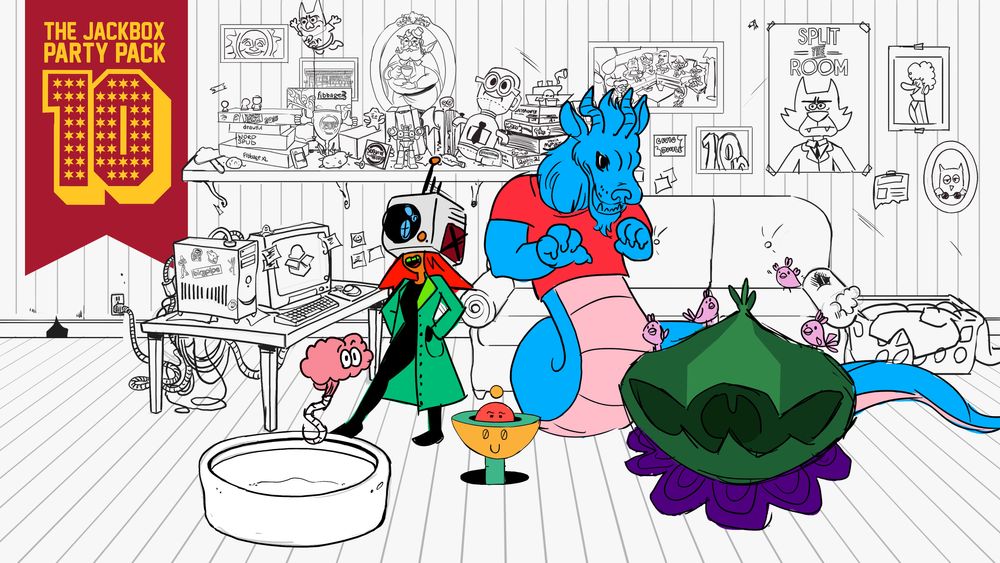Behind The Scenes of Party Pack 10: Audio Edition
Have you ever heard the audio for our games? It’s FULL of farts. If you were to step into the Jackbox offices you would be OFFENDED by the smell that permeates every pore of that space because of how many farts and toots we’ve had to include for the past ten years. You’d think that we wouldn’t be able to jam a fart into every game but, boy, are we able to prove you wrong, year after year!
In order to understand how a fart goes from our butts to your ears, we need to understand what it takes to make, record, and deliver those toots to each game. At Jackbox, the Audio Leads are responsible for both the sound effects as well as the soundtrack for each game. We all know that doing anything in total silence makes us all break out into a cold sweat, forced to confront our own thoughts, so the audio on every game is very important!
Because we have five distinct games, the sound and music go a long way in differentiating the tone for each game. And with our first rhythm game, Dodo Re Mi, the audio team really had their work cut out for them. Game audio done well may be something that can go wholly unnoticed by a player, but when done poorly can completely break a game’s immersion.
We spoke to a few members of our audio team on how they made the sound for Party Pack 10.
What was your role on Party Pack 10? And what is your title overall at Jackbox? What does this role entail?
Andy Poland: I was the Audio Lead for Hypnotorious, which means I created all of the music and SFX for that game. I was also part of the design team for that game. My overall title at JBG is VP of Audio and Editorial, which means I oversee the audio team and I also work with Tom Gottlieb, who's the point person for the editorial team.
Brian Chard: I was Audio Lead for Tee K.O. 2 and contributed music and beat mapping to Dodo Re Mi. I also did the music and sound effects for the Picker and Loader (the stuff you hear when you boot up the pack). An Audio Lead is responsible for the sound design of the game, usually creating any and all music and sound effects.
Nate Sandberg: I created the music and sound design for Dodo Re Mi in Party Pack 10. My official title at Jackbox is Audio Lead. This basically means that I'm responsible for creating all the audio for any game I'm working on. At many other dev companies, they'll split the music and sound design into two different specific jobs. But here at Jackbox, we get the privilege of doing both, which is much more fun and rewarding!
Elise Wattman: [I am an] Audio Lead! I created the music and SFX for [Timejinx].
Kelly Shuda: Audio Lead, on FixyText. I designed all of the sound effects and wrote and produced all the music.
How did you approach the audio on Party Pack 10? How did it differ from past titles you've worked on?
Andy Poland: The big difference for Party Pack 10 was that I was only working on one game for the first time (up until then I worked on at least two). In creating the sound of Hypnotorious, I worked closely with Owen Watson, the game's Art Lead, to come up with a style that supported his art direction. The initial drawings and concepts had a Vaudeville feel to them, so I leaned into that musically and sonically. It was fun to explore some instrumentation that I haven't really used a lot before, including violin, theremin and accordion.
An an early version of a game loop with farts as part of the rhythm track by Andy Poland. Poland states, "As a fartist, I thought it'd be a fun thing to explore but even I thought it might be a little too much."
Nate Sandberg: The audio for Dodo Re Mi was very different from past games because this was our first music game. I not only had to create background music, but I also had to write the songs that people would play along with in the game. This was a different composition process for a few reasons. First, I had to create a lot of arrangements of public domain songs. I tried to take familiar songs and put them in surprising styles -- like Hip Hop Moonlight Sonata and Dub Step Flight of the Bumblebee. I had to think about each individual instrument line in the songs and make sure that they were fun to play.
A voice memo from Dodo Re Mi Audio Lead, Nate Sandberg, of an early version of the chorus in the credits song.
I also had to record the Instrument sounds for the game. We spent a lot of time recording sounds for the 125 instruments in the game. This usually meant we'd record a musician repeatedly playing each note on an instrument from low to high. We'd then separate the notes into individual samples and use them to create virtual sampler instruments. Also, I had to work a lot on creating the dynamic mix for the song playback. This is where players get to hear a recording of their own performances as they played them. This was on top of the regular game mix and the controller mix as well!
Elise Wattman: I wanted Timejinx to be synth heavy and reflect the game host's snarky tone by being dark and brooding, as well as sonic imagery for space travel and jumping through time. Last year my game's music was...bluegrass. So very different sides of the musical spectrum sphere!
What did you pull for inspiration when designing the sound of the game?
Kelly Shuda: One of the biggest inspirations for [FixyText] was old analog drum machines. Using sounds from 70s organ accessories called Rhythm Machines, that have a few preset beats and a tempo control, and combining them with the Roland TR-808, which sounds more modern because it is one of the most influential drum machines of all time. Many samples from this machine are still used in music today. So by combining those two sounds for the percussion and beats, with the keyboard sounds, I was able to create a chaotic environment, while focusing on keeping it balanced and not too distracting.
![]()
An early test of FixyText avatars by Bruno Rodríguez.
Elise Wattman: [I was inspired by] Wendy Carlos and her early film scores and electronic music (including early synth technology that she designed herself!)
A 1989 BBC Two interview of Wendy Carlos about her work and process.
Andy Poland: Well, Owen’s art was so classic, so that was my main source of inspiration. His style is a kind of retro 60s/70s animation style, so I had my whole childhood to draw from, sonically. And then there are all the classic hypnosis tropes, so I was able to have a lot of fun with that, too.
What is most important when approaching the sound design for a game?
Andy Poland: The big thing for me is to have a unique point of view. Yes, there can be a lot of influences that go into making music and sound, but the key is to take all of these influences and then throw them into a (figurative… or real) blender and end up with something you haven’t really heard before. I think a lot of video games out in the world have a tendency to sound like other video games. What I love about Jackbox is that we encourage the audio team to develop their own style and to really try not to sound like anything else. That’s why I think Jackbox games sound like… Jackbox Games.
Nate Sandberg: I think the most important thing for sound design is that the sound effects and music cause the player to feel more immersed in the world of the game. Ideally the art, editorial, and audio should all work together to create a world that's larger than the sum of its parts. The audio should also sound good in general!
A voice memo of early chorus ideas for Dodo Re Mi by Jackbox Audio Lead, Nate Sandberg.
Brian Chard: The music/sound effects should reinforce the vibe of the game. It/they should be accessible while not taking attention away from the gameplay.
Did you have a favorite sound effect or song from Party Pack 10?
Brian Chard: I like the Lobby tune a lot, I like Shirt Creation 1 (catchy titles, eh?), but my fave is probably the hidden track, which is a remix of my favorite Tee K.O. tune. It's set to play only about 30% of the time, in between the two versions of the credits song (vocal and instrumental), so I'm not sure how many people have heard it. (It is on the OST, just sayin'... :))
A remix of a Tee K.O. song for Tee K.O. 2 by Jackbox Audio Lead, Brian Chard.
Kelly Shuda: I love my Menu music, which is an ambient track created by taking [the FixyText] Lobby music and slowing it wayyyyy down.
Andy Poland: I don't know why, but I really like the sound of the brainwasher. I recorded my dryer with a bunch of shoes in it and then added in some other weird sounds. It's a very background-y sound, but it was fun to create. Song-wise, I think the credits song came out pretty well. As usual, I had Mike Finney do the vocals and, as usual, he killed it.
Nate Sandberg: My favorite song from Party Pack 10 is probably the credit song. It took me a while to figure out the right sound for that song, but in the end I think it turned out really well and I'm proud of the lyrics and the production.
Elise Wattman: My cat in real life made it into the alarm sound for the imposter. The meow is Mr. KitKat!
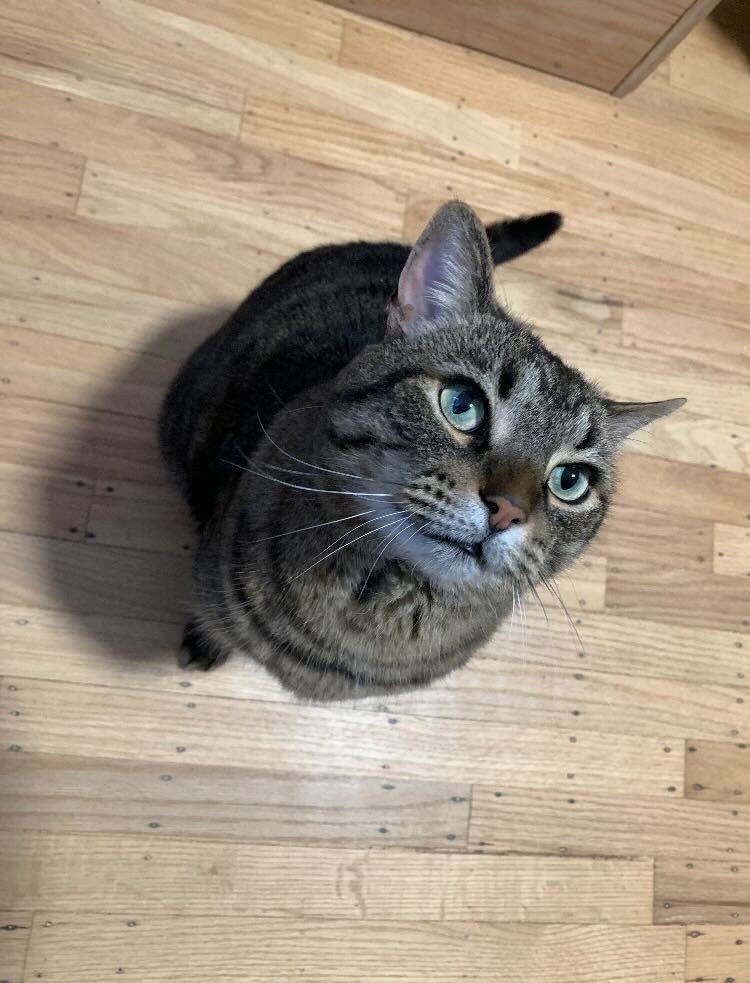
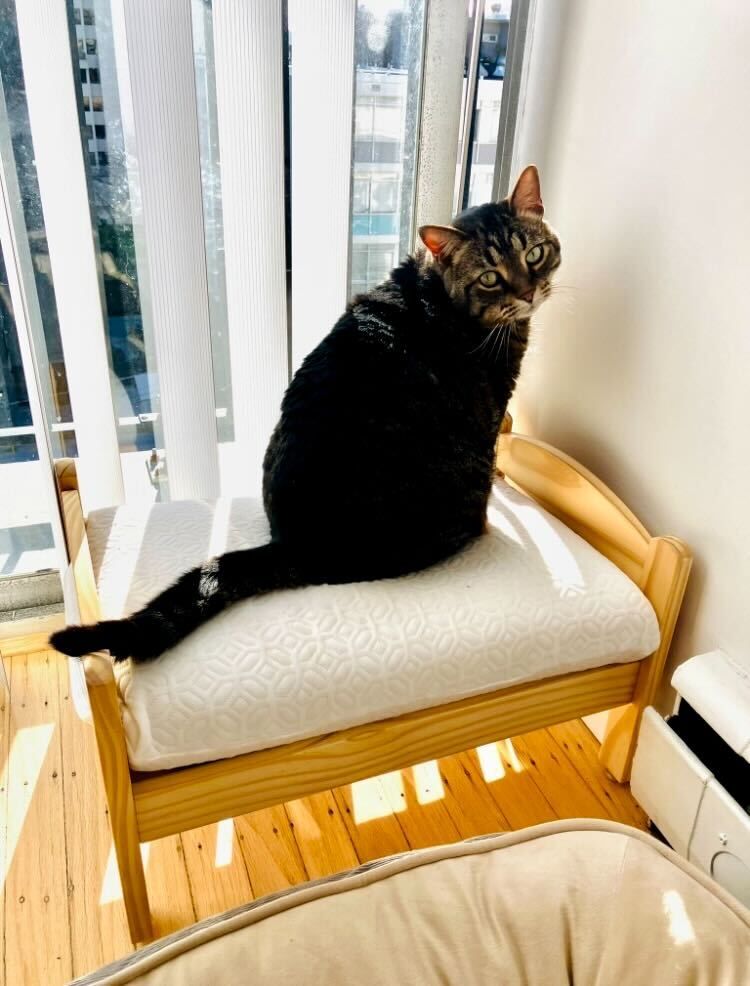 Star of Timejinx and loyal housepet, Mr. KitKat.
Star of Timejinx and loyal housepet, Mr. KitKat.
What are some of the biggest challenges when working on the sound design for Party Pack 10?
Andy Poland: The biggest challenge is that audio is always the last link in the chain during production. So projects start out with a lot of waiting around for the game to be built, and then everything comes in fast and furious toward the end of production. You can come up with ideas at the beginning and sketch things out, but you can’t really dig until there’s art and animation in the game. But that’s also what makes the whole process kind of exciting.
Brian Chard: The biggest challenge for Tee K.O. 2 was trying to come up with music and sounds that could stand proudly beside those in Tee K.O.. Eight years later, it's still some of my best work. For Dodo I had to learn beat mapping; I also had to mix my music conforming to the specific, unique way it needed to be done in order to function in the game.

A Tee K.O. 2 character style test by Hector Padilla.
Nate Sandberg: I think the biggest challenge for sound in Dodo Re Mi was figuring out how the Performance Playback mix was going to work. We had to figure basic rules for mixing player performances without knowing what those performances would sound like. Plus we had to use brand new tools to create these mixing rules. There was a lot of trial and error to figure out server settings, volume levels, panning and more just to get as clean a final mix as possible.
What was your proudest accomplishment from working on Party Pack 10 (or at Jackbox in general)?
Kelly Shuda: It felt amazing to see my very first video game out in the wild. As a musician there are always details I want to change in the final product, but as a whole I'm proud of my work on FixyText and think it serves the game well.
Elise Wattman: A really good roller skater online did a dance to some of my music. I was tagged in some insta stories of people around the world dancing to the credit song and that made my day. I love when people listen to the soundtrack and reach out to say they enjoy it! It makes me feel connected to people all over who enjoy our party games.
Andy Poland: I thought the Hypnotorious team really pulled together and made a solid game. There were definitely some challenges but the team was very creative in finding ways to address them -- making a hidden identity game is not an easy task but I'm proud of how we approached it. I'm also kinda proud that, after 30 years at Jackbox, I was still able to squeak out some music in a style I hadn't really tried before. (Still some water in this old well!)
Are there any fun stories of memories from making Party Pack 10 that you're particularly fond of? Or anything else you feel should be included in the blog?
Andy Poland: One unexpected fun perk showed up after production was done. Everyone on the team got this cool light up, LED stand with the Hypnotorious eyes on it. It currently sits on one of my speakers and it's a great reminder of my time on the project... and that I'm always being watched.

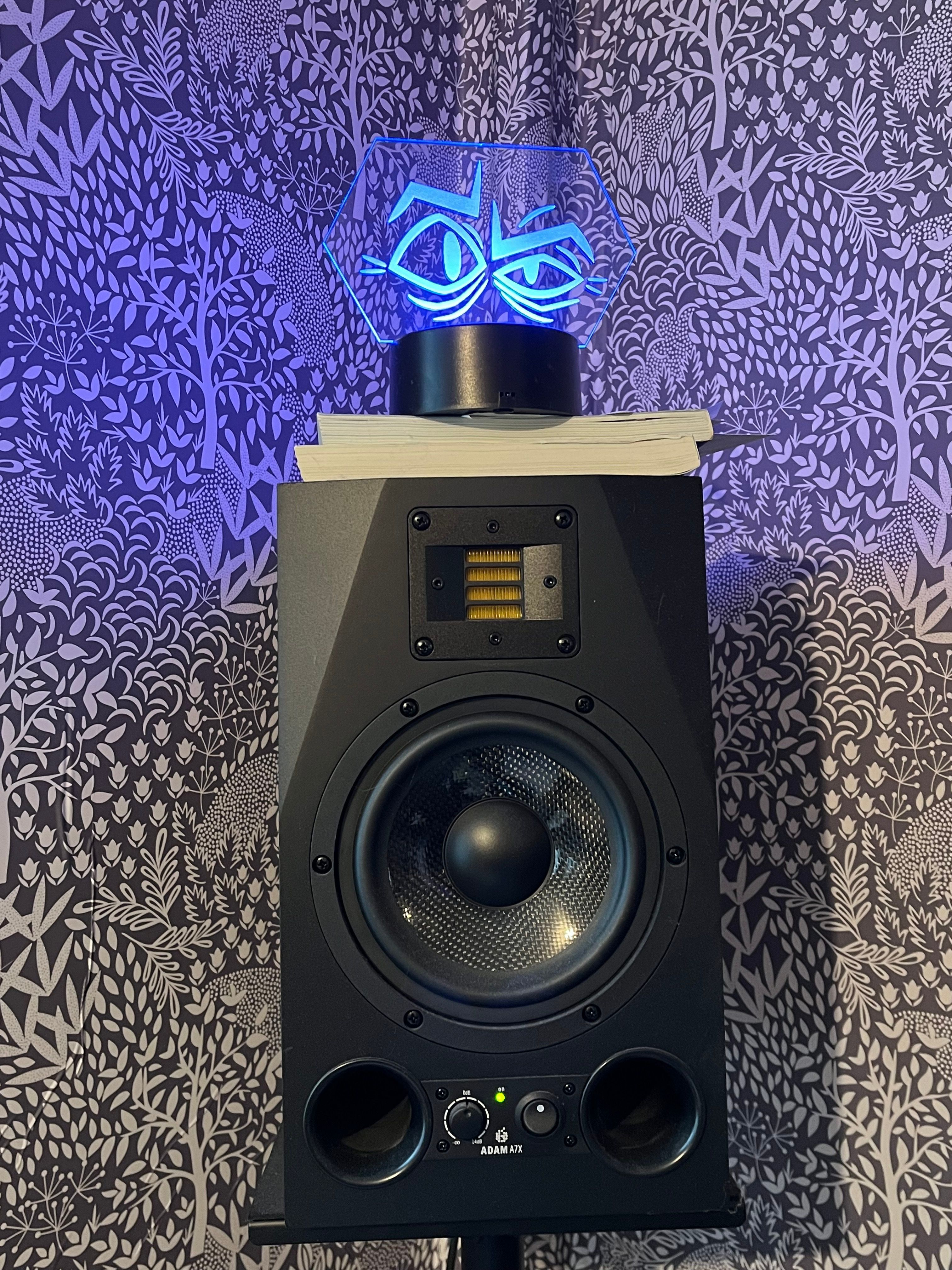
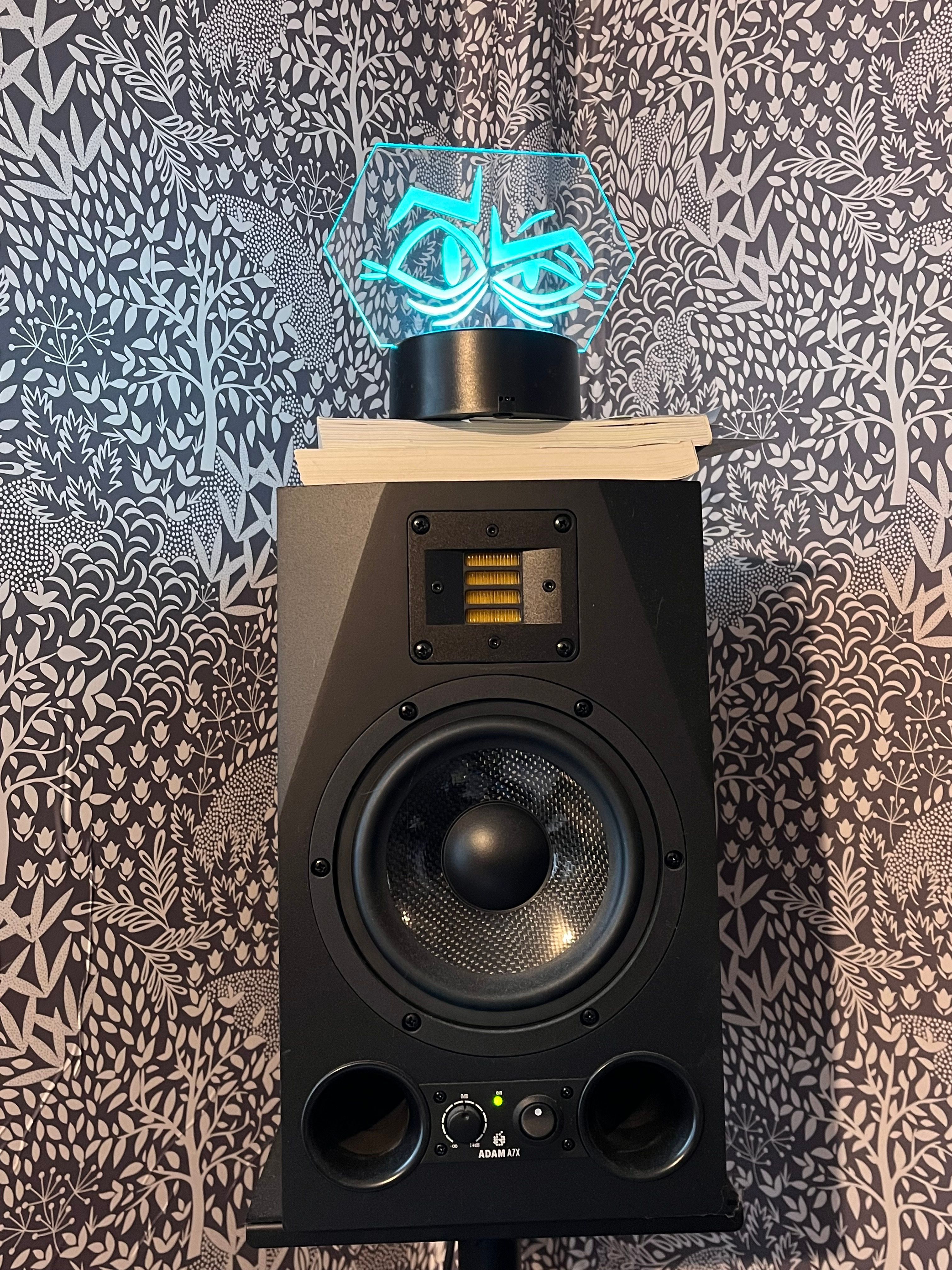
Hypnotorious LED stand that was a gift for the team from producer Lindsey Leder.
Brian Chard: This is the second Party Pack in which Fluff, my family's bird, appears. His "voice" is in Roomerang from Pack 9; in Pack 10 he's heard in the Loader, and I'm told his likeness is in Dodo Re Mi.
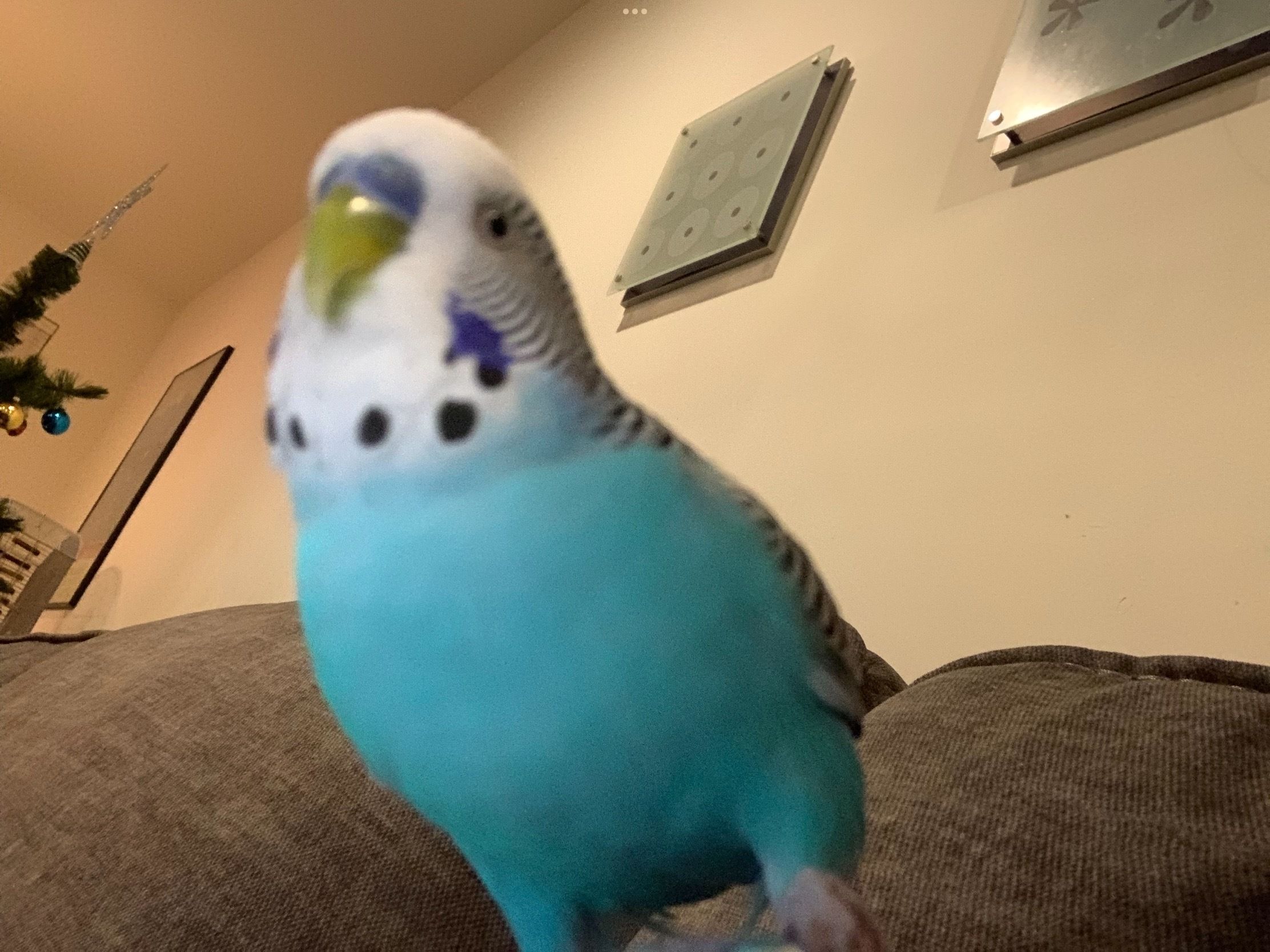 Fluff, star of Roomerang and Dodo Re Mi.
Fluff, star of Roomerang and Dodo Re Mi.
Nate Sandberg: Avery Makel and I had a blast recording some of the weirder instruments in Dodo Re Mi. Constant Screaming and Gargles were some of the most fun. I nearly drowned trying to sing on pitch with water in my mouth, but it was worth it!
Elise Wattman: I improvised a 20 min piano solo to generate ideas. A piece of this improvisation is on the soundtrack called "Relativity Frequency." Most people ask..."is that in the game? What even is this?" So, the answer was: it was just me playing in my bedroom studio at 2am trying to think of what I was going to do.
What advice would you give someone else interested in working in audio design in the video game industry?
Kelly Shuda: The same I would in any artistic industry. Make the art. Every hour you spend making things and challenging yourself is valuable, both as a learning tool and in creating a body of work to show off.
Brian Chard: Keep applying for jobs and honing your craft. Have an easy-to-navigate website, updated regularly with the latest examples of your work. Take any game related gig you can: student films, friends' projects, etc. Choose a minute or so of a cutscene from an existing game and redo its sound design: music, sound effects, voiceover, all of it.
Nate Sandberg: I would suggest that anyone interested in this work should start making music and sound effects at home. Learn how audio recording and production works. Work on projects with your friends and start to build your skills and your portfolio. If you need someone to guide your audio and music education (I did) find classes or go to a school with great audio/music programs. Learn how to make things sound professional and creatives will want to bring you in on their projects!
Elise Wattman: Keep mixing until you get that tingle, that "YES THIS SOUNDS GOOD" feeling. Have fun. Keep creating. Keep generating ideas. Keep listening. Everything I create could be better, but eventually you have to release it. And then the more you make, the better you get!
Eventually someone will want YOUR style, and developing a personal sound comes from practice. We don't create in a vacuum; humility and respect are beautiful qualities to possess. No one really can be 100% original, so I value creators who have a great knowledge of musical styles, the global history of music evolution, who then can be intentional about the way they reflect this in their own work.
Andy Poland: I'd say just jump in and start doing it in any way you can. Take a video clip from a game, strip out the audio, and make your own music and/or sound effects. And try that in all different kinds of genres. Unfortunately, I think a lot of games out there sound alike when it comes to audio design. At Jackbox, we always try to come up with music and audio that doesn't really sound like other, more traditional games. Try to develop your own style. If I hear something I haven't really heard before, that's when I take notice.
An unused scale of farts by Andy Poland, Jackbox's VP of Audio and Editorial.

